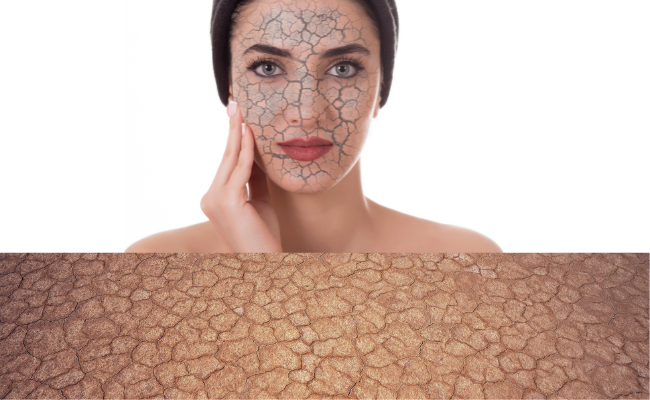How to Treat Xerosis?
- November 10, 2023
- No Comments

What is Xerosis?
Xerosis, commonly known as dry skin, is a dermatological condition characterized by the lack of moisture in the skin. This ailment occurs when the skin loses its natural oils, leading to a parched, rough, and sometimes itchy texture. Xerosis can affect individuals of all ages and backgrounds, and it often becomes more prevalent in certain seasons or climates.
Why Does Xerosis Occur?
Several factors contribute to the occurrence of xerosis. One of the primary causes is environmental conditions. Low humidity, cold weather, and excessive exposure to harsh winds can strip the skin of its natural oils, leading to dryness. Additionally, prolonged exposure to hot water, especially during long baths or showers, can exacerbate the problem by depleting the skin's moisture content.
Certain lifestyle factors can also contribute to xerosis. Insufficient water intake, poor nutrition, and the use of harsh soaps or cleansers may strip the skin of essential oils, promoting dryness. Medical conditions such as eczema, psoriasis, and hypothyroidism can also be underlying causes of xerosis.
How to Identify Xerosis?
Recognizing the signs of xerosis is crucial for early intervention. Symptoms may include tightness or a feeling of tautness in the skin, redness, itching, and the appearance of fine cracks or flakiness. In severe cases, xerosis can lead to painful fissures and bleeding.
To confirm the diagnosis, healthcare professionals may examine the affected skin and inquire about the patient's lifestyle, skincare routine, and any existing medical conditions. In some cases, additional tests may be necessary to rule out underlying health issues.
Treatment Solutions for Xerosis:
- Hydration is Key: The most fundamental aspect of treating xerosis is maintaining adequate hydration. Drinking sufficient water helps replenish the body's internal moisture levels, reflecting positively on the skin. It is recommended to consume at least eight glasses of water a day to support overall skin health.
- Moisturize Regularly: Applying a moisturizer is crucial in preventing and treating xerosis. Opt for emollient-rich creams or ointments that create a protective barrier on the skin, locking in moisture. Moisturizers should be applied immediately after bathing or washing hands, as this helps trap the moisture from the water.
- Avoid Harsh Soaps: Harsh soaps and cleansers can exacerbate dry skin. Opt for mild, fragrance-free soaps that do not strip the skin of its natural oils. Additionally, limiting the time spent in hot water and opting for lukewarm showers can prevent further moisture loss.
- Humidify Your Environment: Using a humidifier in indoor spaces can help combat the drying effects of central heating or air conditioning systems. This is particularly beneficial in cold climates where the air tends to be dry. Maintaining a humidity level of around 50% is considered optimal for skin health.
- Choose Skin-Friendly Fabrics: Wearing fabrics such as cotton and silk allows the skin to breathe, reducing the risk of irritation and dryness. Avoiding tight-fitting clothing and opting for loose, comfortable attire can also contribute to better skin health.
- Incorporate Omega-3 Fatty Acids: Omega-3 fatty acids, found in fatty fish, flaxseeds, and walnuts, have anti-inflammatory properties that can benefit the skin. Including these foods in your diet may help nourish and moisturize the skin from within.
Benefits of Treating Xerosis:
- Relief from Discomfort: Treating xerosis provides immediate relief from discomfort associated with dry skin, including itching, tightness, and pain. Moisturizing and hydrating practices help soothe the skin, enhancing overall comfort.
- Prevention of Complications: Untreated xerosis can lead to complications such as infections, especially if the skin becomes cracked and prone to bacterial or fungal invasion. By addressing dry skin promptly, individuals can prevent these complications and maintain skin integrity.
- Improved Aesthetic Appearance: Dry skin can often appear dull, flaky, and prematurely aged. Effective treatment not only alleviates symptoms but also improves the aesthetic appearance of the skin, promoting a healthier and more vibrant complexion.
- Enhanced Skin Barrier Function: Regular moisturizing and hydration contribute to the reinforcement of the skin's natural barrier function. This, in turn, helps the skin better withstand external stressors and reduces the risk of further moisture loss.
- Boosted Self-Confidence: Improved skin health can have a positive impact on an individual's self-esteem and confidence. Addressing xerosis and achieving healthy, well-nourished skin contributes to an overall sense of well-being.
Comments (0)